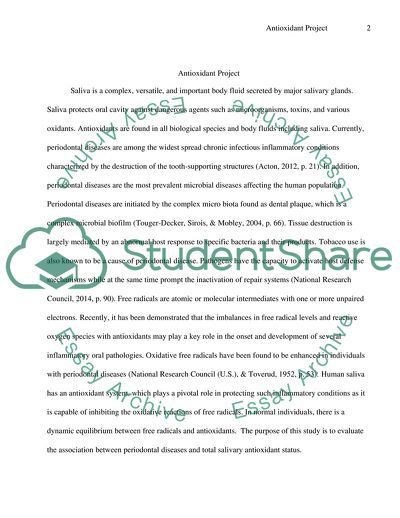Cite this document
(Antioxidants in Humans Saliva Case Study Example | Topics and Well Written Essays - 2000 words - 1, n.d.)
Antioxidants in Humans Saliva Case Study Example | Topics and Well Written Essays - 2000 words - 1. https://studentshare.org/health-sciences-medicine/1856410-antioxidant-project
Antioxidants in Humans Saliva Case Study Example | Topics and Well Written Essays - 2000 words - 1. https://studentshare.org/health-sciences-medicine/1856410-antioxidant-project
(Antioxidants in Humans Saliva Case Study Example | Topics and Well Written Essays - 2000 Words - 1)
Antioxidants in Humans Saliva Case Study Example | Topics and Well Written Essays - 2000 Words - 1. https://studentshare.org/health-sciences-medicine/1856410-antioxidant-project.
Antioxidants in Humans Saliva Case Study Example | Topics and Well Written Essays - 2000 Words - 1. https://studentshare.org/health-sciences-medicine/1856410-antioxidant-project.
“Antioxidants in Humans Saliva Case Study Example | Topics and Well Written Essays - 2000 Words - 1”. https://studentshare.org/health-sciences-medicine/1856410-antioxidant-project.


